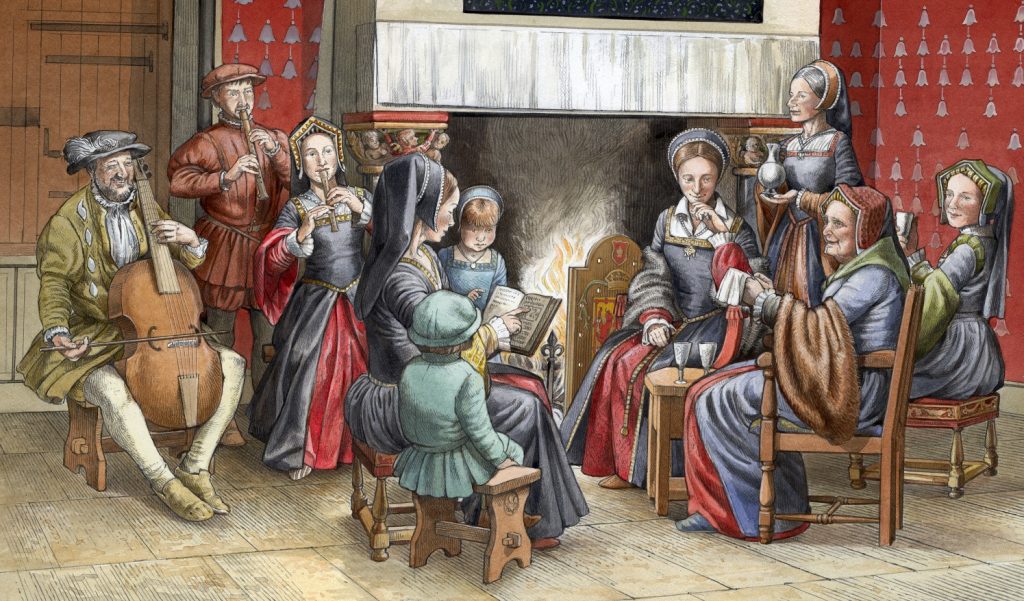The celebration of Christmas Day in Scotland technically has a limited history; it was abolished in 1640 by the Parliament of Scotland, and only became a public holiday in 1958. This means that 2016 will only be Scotland’s 59th Christmas holiday in 376 years. The roots of Christmas Day however, and the celebration of the full festive period, have much older origins.
Neolithic solstice
The festive period stems from an acknowledgement of the Winter Solstice; the shortest day in the calendar. In around 2700 BC the Neolithic people built Maeshowe on Orkney. For three weeks before and after the Winter Solstice, the setting sun shines all the way down the stone-built entranceway into the chambered cairn, casting light onto its far wall (you can witness this yourself on the Maeshowe webcam).
We do not know exactly why Orkney’s prehistoric people acknowledged the Winter Solstice, but it is likely that the period held high significance; the solstice is the darkest and coldest time of the year, and once it passes the days get longer, warmer and brighter until the Summer Solstice in June.

Winter sun strikes the back wall of the chamber at Maeshowe on the shortest day of the year
Viking Yule
Vikings began raiding Scotland in the late 700s AD. They later settled, bringing their own way pre-Christian way of celebrating the Winter Solstice, which they referred to as Jól (which became known as Yule in Scotland). Yule was celebrated for at least 12 days, and is believed to have been a way of honouring ancestors in the darkest time of the year.
Over a thousand years later, some Scottish festive traditions still bear reference to the Vikings and Yule. According to the Hogmanay tradition of First Footing (where the first guest to enter the household on New Year’s Day is a bringer of good luck), it is desirable for the guest to be a dark-haired male, as fair-haired males were considered unlucky. This attitude towards fair-haired individuals may reflect an unwanted Viking entering a household.
We also light fires and decorate our homes with holly and mistletoe – pagan customs from before Christianity came to these shores.
Christianity arrives

Scottish midwinter banquet of the 1500s
Yule gradually became a Christian celebration (what we refer to now as Christmas) in all areas where the Church held authority, but in 1560 Scotland split from the Catholic Church in a period known as the Scottish Reformation. This split provoked a change in religious thought, and any activity that could be seen as extravagant, or as celebrating superstitious ideals, was heavily frowned upon; this included the celebration of Yule.
A forbidden celebration
In 1583 the Glasgow Kirk at St Mungo’s Cathedral (also known as Glasgow Cathedral) ordered the excommunication of those who celebrated Yule, whilst elsewhere in Scotland, even singing a Christmas carol was considered a serious crime. After years of build-up, finally in 1640 an Act of Parliament of Scotland made the celebration of Yule illegal. This ban was officially repealed in 1712, but the Church continued to frown upon the festive celebrations. Punishments for celebrating Yule were harsh, and there was no public holiday for the Scottish people on Christmas Day.
The banishment of Christmas meant that the Scots would focus their celebration around New Year’s Eve (Hogmanay) and the two days that followed, making Hogmanay the large and exciting festival we know it as today.
After centuries of social, religious and political change, Christmas in Scotland has become a very unique celebration.
And as in times long past, we treat this time of year as a holiday season, rather than a single day. Christmas flows into Hogmanay in a glow of family, friends, fun and feasts – and that’s about as traditional as you can get.

